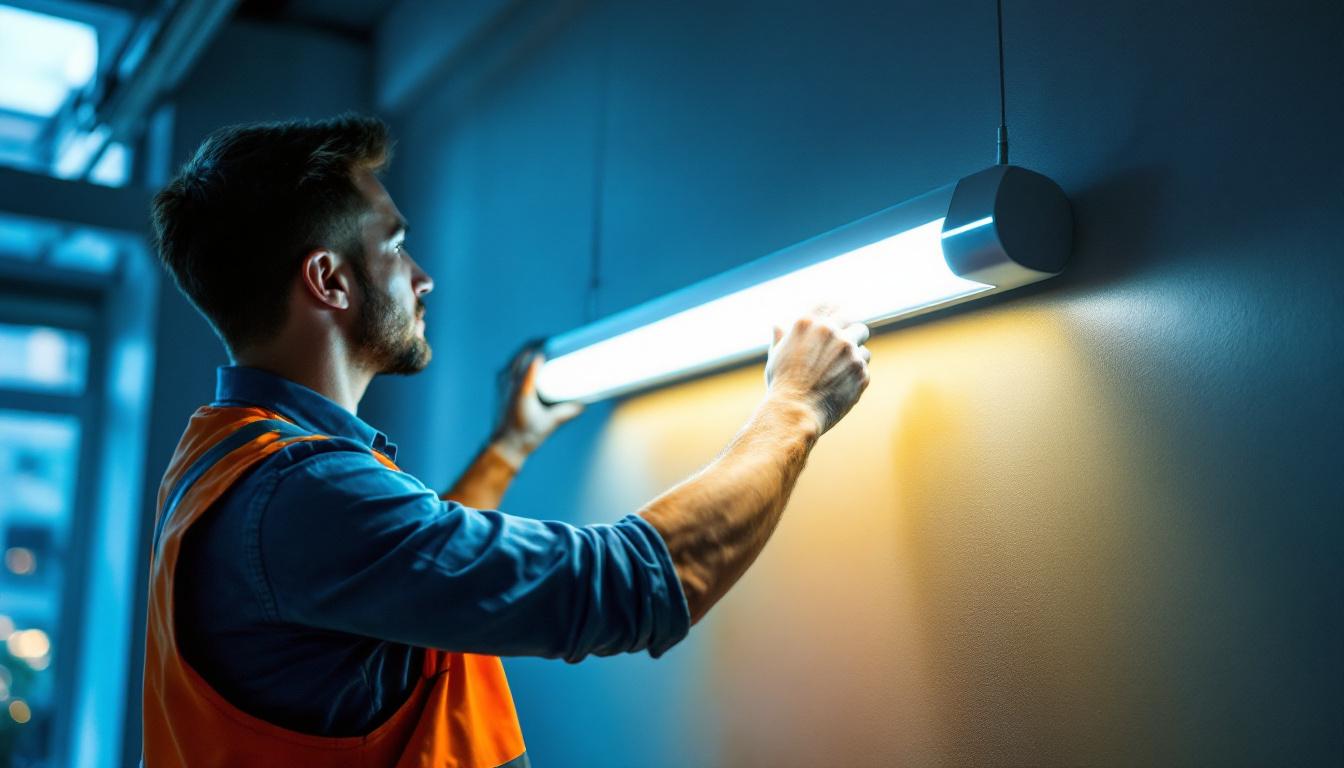
As the demand for innovative lighting solutions continues to grow, so does the complexity of electrical installations. Lighting contractors often face a myriad of challenges when it comes to electric outlets. From ensuring compliance with safety regulations to managing client expectations, the road can be fraught with obstacles. This article aims to explore these challenges and provide actionable insights for lighting contractors to navigate them effectively.
Electric outlets are a fundamental component of any lighting installation. They serve as the connection point between the electrical supply and the lighting fixtures, making their proper installation and maintenance crucial. However, the landscape of electric outlets is constantly evolving, influenced by advancements in technology and changes in regulations.
Lighting contractors must stay informed about the latest developments in outlet technology, including smart outlets and energy-efficient models. Understanding these innovations not only enhances service offerings but also positions contractors as knowledgeable professionals in the field. For instance, smart outlets can be controlled remotely via smartphone apps, allowing users to manage their energy consumption more effectively. This not only provides convenience but also promotes sustainability, as homeowners become more aware of their energy usage patterns.
Compliance with local and national electrical codes is non-negotiable for lighting contractors. Failure to adhere to these regulations can lead to serious safety hazards, including electrical fires and electrocution. Moreover, non-compliance can result in costly fines and damage to a contractor’s reputation.
Contractors should prioritize staying updated on the latest codes and standards. This may involve attending training sessions, subscribing to industry publications, or participating in professional organizations. By doing so, contractors can ensure that their work not only meets but exceeds compliance requirements. Furthermore, understanding the nuances of these regulations can also provide contractors with a competitive edge, as they can offer clients peace of mind knowing that their installations are safe and up to code. This level of diligence can foster trust and lead to repeat business and referrals.
Lighting contractors encounter various challenges when dealing with electric outlets. These can range from outdated wiring systems to the complexities of retrofitting existing structures. Understanding these challenges is the first step in overcoming them.
One common issue is the lack of access to electrical panels, which can complicate installations. Additionally, contractors often face the challenge of integrating new technologies into older systems, requiring creative problem-solving and technical expertise. For example, when retrofitting a historic building, contractors must navigate not only the existing electrical infrastructure but also the preservation requirements that protect the building’s architectural integrity. This often necessitates collaboration with architects and preservationists to find innovative solutions that respect the building’s history while modernizing its electrical capabilities.
Moreover, the rapid pace of technological advancements means that contractors must continuously educate themselves about new products and installation techniques. This can be particularly challenging in a market that is increasingly leaning towards sustainable solutions, such as solar-powered outlets and energy-efficient designs. Staying ahead of these trends not only enhances a contractor’s skill set but also ensures they can meet the evolving needs of their clients, who are becoming more environmentally conscious and demanding in their choices.
To successfully navigate the complexities of electric outlet installations, lighting contractors can employ several strategies. These approaches not only mitigate challenges but also enhance overall project efficiency and client satisfaction.
Before commencing any project, a comprehensive assessment of the site is essential. This includes evaluating the existing electrical infrastructure, identifying potential hazards, and determining the specific needs of the client. A thorough assessment helps in devising a tailored plan that addresses all necessary considerations.
Incorporating advanced tools such as thermal imaging cameras can aid in identifying hidden issues within the electrical system. By uncovering potential problems early on, contractors can avoid costly delays and ensure a smoother installation process. Additionally, utilizing software for project management can streamline the assessment phase, allowing for better documentation and communication among team members. This not only enhances accountability but also ensures that all stakeholders are informed about the project’s status and any identified concerns.
Continuous education is vital for lighting contractors looking to stay ahead in a competitive market. Investing in training programs not only enhances technical skills but also fosters a culture of safety and compliance within the team.
Workshops and certifications focused on the latest technologies, safety practices, and regulatory changes can empower contractors to tackle challenges more effectively. Furthermore, a well-trained team is better equipped to handle unexpected issues that may arise during installations. Beyond formal training, encouraging mentorship within the team can facilitate knowledge sharing and skill development, creating a robust support system that nurtures both new and experienced electricians. This collaborative environment can lead to innovative problem-solving approaches, ultimately benefiting the project and enhancing client trust.
Effective communication with clients is crucial for lighting contractors. Clear dialogue helps manage expectations and fosters a collaborative working relationship. Understanding the client’s vision for their lighting project is essential for delivering satisfactory results. This understanding goes beyond just the aesthetic preferences; it also encompasses the functional requirements and the intended ambiance of the space. By engaging in thorough discussions, contractors can uncover the nuances of the client’s needs, ensuring that every detail is considered in the design and implementation phases.
One of the most significant challenges in any project is time management. Contractors must set realistic timelines that account for potential setbacks, including delays in material delivery or unforeseen complications during installation. This foresight is particularly important in the lighting industry, where the availability of specific fixtures or components can vary greatly. By anticipating these challenges, contractors can create a buffer in their schedules, allowing for a smoother workflow and minimizing stress for both the contractor and the client.
By providing clients with a clear timeline that includes milestones, contractors can keep clients informed and engaged throughout the process. This transparency helps build trust and can lead to positive referrals and repeat business. Additionally, sharing potential risks and the strategies in place to mitigate them can further enhance the client’s confidence in the contractor’s capabilities. When clients feel informed and involved, they are more likely to appreciate the complexities of the project, leading to a more harmonious working relationship.
Regular updates during the project can significantly enhance client satisfaction. Contractors should establish feedback loops, allowing clients to voice concerns or ask questions at various stages of the installation. This ongoing dialogue not only helps in addressing immediate issues but also empowers clients, making them feel like integral parts of the process. By encouraging clients to share their thoughts, contractors can gain valuable insights that may lead to adjustments that improve the final outcome.
Utilizing project management tools can facilitate this process, enabling contractors to share progress updates and receive client feedback in real-time. This proactive approach not only addresses potential issues promptly but also reinforces the contractor’s commitment to quality and customer service. Furthermore, documenting these interactions can serve as a reference for future projects, allowing contractors to refine their communication strategies and better meet client expectations over time. By fostering an environment of open communication and responsiveness, contractors can ensure that their clients remain satisfied and engaged, ultimately leading to a successful project and a lasting professional relationship.
Technology plays a pivotal role in modern electrical installations. From smart outlets to advanced lighting control systems, embracing technology can streamline processes and enhance the overall quality of work.
Smart outlets are becoming increasingly popular due to their ability to provide enhanced control and energy efficiency. Contractors who are knowledgeable about these products can offer clients innovative solutions that align with contemporary energy-saving practices.
Integrating smart technology into lighting installations not only appeals to environmentally conscious clients but also positions contractors as forward-thinking professionals. Understanding the installation and programming of these systems is essential for maximizing their benefits.
Project management software can significantly enhance the efficiency of lighting contractors. These tools help streamline project planning, scheduling, and budgeting, allowing contractors to manage multiple projects simultaneously.
By utilizing software that includes features such as time tracking, invoicing, and communication tools, contractors can ensure that projects run smoothly and stay on budget. This level of organization can lead to increased profitability and improved client satisfaction.
Safety is paramount in any electrical installation. Lighting contractors must prioritize safety protocols to protect themselves, their teams, and their clients. Understanding the risks associated with electric outlets is essential for preventing accidents and ensuring compliance with safety regulations.
Contractors and their teams should always wear appropriate personal protective equipment (PPE) when working with electric outlets. This includes gloves, safety glasses, and insulated tools to minimize the risk of electrical shock.
Regular training sessions on the proper use of PPE can reinforce the importance of safety and ensure that all team members are equipped to handle potential hazards effectively.
Establishing clear safety protocols is crucial for minimizing risks during installations. Contractors should create a safety checklist that outlines necessary precautions, including shutting off power before beginning work and using voltage testers to confirm that circuits are de-energized.
Conducting regular safety meetings can also promote a culture of safety within the team. Encouraging open discussions about safety concerns and best practices can lead to a more vigilant and informed workforce.
The challenges faced by lighting contractors in the realm of electric outlets are multifaceted, but they are not insurmountable. By understanding the landscape, employing effective strategies, and embracing technology, contractors can navigate these challenges with confidence.
Ultimately, prioritizing compliance, investing in training, and maintaining open communication with clients are key components of a successful lighting installation business. As the industry continues to evolve, staying adaptable and informed will ensure that lighting contractors remain at the forefront of their field.
Ready to tackle your next lighting project with confidence? At LumenWholesale, we provide lighting contractors like you with the highest quality, spec-grade lighting products at prices that can’t be beaten. Say goodbye to middleman markups and hello to a vast selection of reliable lighting solutions that meet rigorous industry standards. With free shipping on bulk orders, you can stock up on superior lighting without worrying about hidden fees. Elevate your lighting installations with the perfect combination of quality, affordability, and convenience. Discover the value that LumenWholesale brings to your projects by visiting Wholesale Lighting at the Best Value today.

Discover essential tips for lighting contractors to avoid common pitfalls when using LED work lights.

Discover the essential do’s and don’ts for lighting contractors when installing low voltage LED strip lights outdoors.

Discover the comprehensive guide to LED fluorescent lighting tailored for contractors.

Discover the essential guide for lighting contractors on selecting the perfect CFL bulb ballast.